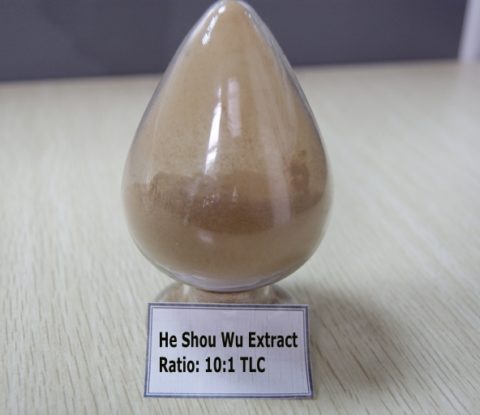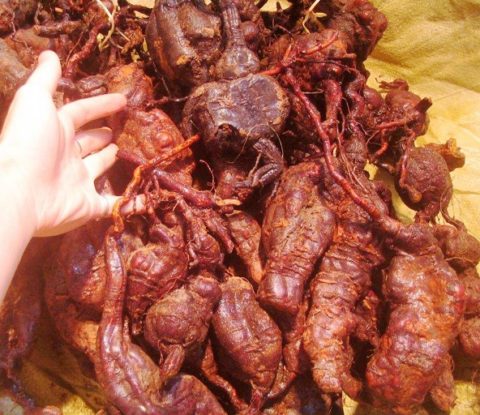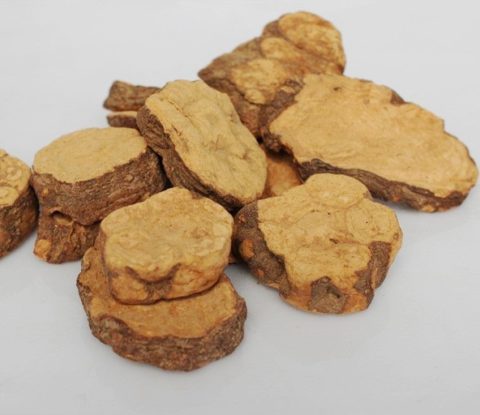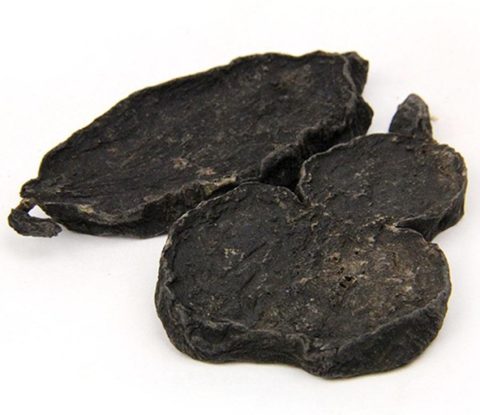
Prepared He Shou Wu Extract Powder 10:1, 20:1, 50:1 TLC
He Shou Wu is one of the most popular and highly revered tonic herbs in TCM herbalism which is used to detoxify the blood, lower blood pressure and strengthen circulation.
Prepared He Shou Wu Extract Powder
【Other Names】: He shou wu, fo-ti,Tuber Fleeceflower Root, Radix Polygoni Multiflori, Fallopia multiflora.
【Latin Name】: Polygonum multiflorum Thunb
【Part Used】: Prepared he shou wu(prepared/processed with black beans)
【Specification】: 10:1,20:1,50:1 TLC
【Appearance】: Brown fine powder
【Particle Size】: 100% through 80 mesh
【Packing】: 1kg,2kg,5kg/bag (packed in an aluminum foil bag outside; double-layer PE inside); 25kg/fiber drum.
【Physicochemical index】:
Heavy Metal <10ppm(As <1ppm, Pb <2ppm, Hg <0.2ppm);
Pesticides Residues <1ppm;
Total Plate Count <1000cfu/g (Yeast & Mould <100cfu/g, Salmonella: Negative, E.Coli: Negative).
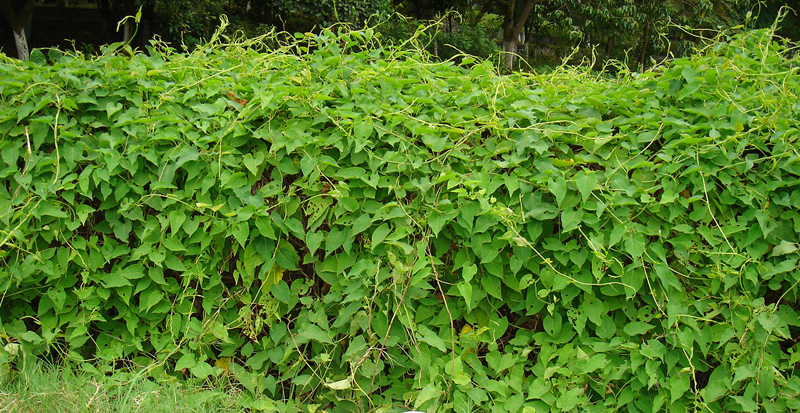
He Shou Wu Extract is an extract of the roots of the polygonum, which is a synonym for Reynoutria multiflora (Thunb.) Moldenke also called tuber fleeceflower, Chinese knotweed, Fallopia multiflora and heshouwu, is a species of flowering plant in the buckwheat family Polygonaceae. An extremely popular herb in Oriental medicine, Fo-Ti has been used as an overall herbal tonic for many different conditions. The Chinese name for Fo-Ti, he-shou-wu, is said to be the name of a man from the Tang dynasty (7th to 10th Century), who cured his infertility and prolonged his life thanks to the use of the herb. Since then it has been used for everything from insomnia, to dizziness, to coronary disease and even general pain. Research in the West suggests that Fo-ti has antitumor and antibacterial properties. It is said to detoxify the blood, lower blood pressure and strengthen circulation. It has also been applied in the case of diabetes and stomach upset. Other uses include: longevity, fertility and overall health; increase of energy; to reduce blood ch holesterol; to stimulate liver and kidney function; and as a mild laxative and to relax the bowel.
He Shou Wu is one of the most popular and highly revered tonic herbs in Asian herbalism. It shares the position as the primary essence (Jing) tonic of Chinese herbalism with Lycium fruit (Goji berry). He Shou Wu is unsurpassed in its ability to provide deep, primordialenergy (Jing, essence) to the cells of the body via the kidney systems. He Shou Wu supplements the human body’s “functional reserve.” It is widely used in Chinese tonic herbalism as a tonic to prevent premature aging by tonifying the kidney and liver functions, toning up Jing (vital essence), nourishing the blood, and fortifying the muscles, tendons, and bones. It strengthens and stabilizes the lower back and knees. It is used to enhance sexual drive, increase sperm count, and strengthen sperm and ova. It is widely used in Asia to maintain the youthful condition and color of the hair. It will calm the nervous system. Because it has components that are potent antioxidants with gently anti-inflammatory action in the liver it can clear the eyes. Its strength comes from its remarkable ability to cleanse the body by cleaning the kidney and liver, which in turn clean the blood. By virtue of its ability to accumulate tremendous quantities of Qi (the traditional Chinese medicine concept for life energy, sometimes pronounced chi) into its root, this herb can tonify these organs and can fortify and nourish the blood. He Shou Wu is also very rich in iron. He Shou Wu is not a stimulant. He Shou Wu is extremely rich in potent antioxidants and in antioxidant-potentiating molecules. He Shou Wu stimulates the body’s innate ability to efficiently clear superoxide, the highly reactive free radical, from the body.
Active Constituents
The tuberous root of Polygonum multiflorum (He Shou Wu) has many active constituents. He Shou Wu is rich in anthraquinones, including many phospholipids such as lecithin (3.7%). A stilbene glycoside known as 2,3,5,4-tetrahydroxystilbene-2-O-β-D-glucopyranoside (henceforth refered to as “he shou wu super-glycoside”) is considered to be the principle active constituent responsible for He Shou Wu’s very powerful antioxidant activity. There are many similar stilbene glycosides present in He Shou Wu. The stilbene glycosides in He Shou Wu are very similar to resveratrol. Several of the stilbene glycosides in He Shou Wu are stronger antioxidants than resveratrol.
What is “Prepared/Processed He Shou Wu”?
During the Tang Dynasty, Lin Daoren wrote the book The Secret Recipes of the Immortals for Treating Wounds and Fractures (Xian Shou Li Shang Xu Duan Mi Fang, 846 A.D.). In that book, he described the processing of he-shou-wu to enhance its tonic properties (processed he shou wu is sometimes called zhi he shou wu to distinguish it from the unprocessed form, which may be designated sheng shou wu). The processing method is to stew or steam the he shou wu in black soybean (heidou) juice for several hours (up to three days, depending on the devotion of the processor to this method) and then dry the roots. This is a technique that is still used today. The black soy bean juice is prepared by boiling black soybeans in water for about 4 hours; the liquid that is left after the cooking is poured off and the beans are cooked again with less water for 3 hours; the resulting extract is combined with the former extract to make the juice. About 10 kg of black beans are used to process 100 kg of he shou wu roots. Black beans are traditionally attributed with the property of supplementing blood and essence, and prolonged cooking or steaming of the herb is associated with enhancing its enriching and warming nature. The alchemical version of this processing, which is similar to the recommended method for making processed rehmannia, is to repeat the stewing or steaming 9 times. Thus, after preparing with the black soybean (overnight) and drying, it is again prepared with black soybean on the next day, and so on, until nine cycles have been completed. This repetition of processing was questioned by Chen Shiduo in his book New Compilation of Herbs (Qing Dynasty), in which he felt that the repeated processing would destroy the quality of the herb. Today, the single processing is relied upon.
The conjugated anthraquinones (such as emodin) present in unprepared He Shou Wu are laxative. After preparation, the amount of conjugated anthraquinones in He Shou Wu decreases, while the free form anthraquinones that have many health-supporting and protective benefits significantly increase. This is why prepared He Shou Wu has a much milder or nil laxative effect compared to raw roots. The “preparation” eliminates the laxative effect of He Shou Wu and brings out the tonic effect. In addition to toxicity elimination, the special preparation process also enhances He Shou Wu’s therapeutic efficacy. He Shou Wu is known to support macrophages. In a test where mice were fed He Shou Wu prepared by different methods, or not prepared at all, at the dose of 6g/kg, only the prepared He Shou Wu that was stewed and steamed with black soybean soup for 32 hours was shown to support the phagocytic activity of abdominal macrophage. He Shou Wu that was raw or prepared differently showed no obvious results.
Indications in Traditional Chinese Medicine
1). Blood and essence deficiency syndrome
Being mild in property–neither dry nor greasy–and with the actions of tonifying blood and supplementing essence, it is a good tonic. For blood and essence deficiency, vertigo and tinitus, soreness and flaccidity of lumbar and knees, early white of beard and hairs, it is combined with other liver and kidney-nourishing herbs and blood and essence-tonifying herbs, for instance, it is used with Gou Qi Zi, Tu Si Zi and Dang Gui in Qi Bao Mei Ran Dan from Ji Shan Tang Jing Yan Fang (Experiential Prescriptions from Jishan Clinic).
2). Chronic malaria
It is very indicated for chronic malaria of both qi and blood deficiency type, because both raw and prepared He Shou Wu can check malaria. Furthermore, it can tonify blood to improve deficiency. For instance, it is used with Ren Shen and Dang Gui in He Ren Yin from Jing Yue Quan Shu.
3). Ulcers and tuberculosis
Raw Shou Wu is indicated for ulcers and tuberculosis, because it can relieve toxicity, dissipate nodulation, in addition, it also has action of relieving itching. For swelling and pain due to ulcers, it is usually combined with phlegm-eliminating herbs and heat-toxin-clearing herbs, for instance, it is used with Jin Yin Hua, Lian Qiao and Ku Shen in He Shou Wu Tang from Yang Yi Da Quan (A Complete Handbook on Traumato-Orthopedics). For tuberculosis, it is usually combined with phlegm-eliminating herbs, toxicity-relieving herbs and nodulation-dissipating herbs, for instance, it is used with Xia Ku Cao and Chuan Bei Mu from Ben Cao Hui Yan (Supplement Materia Medica). For swelling, itching and pain due to ulcers, it is usually combined with herbs to clear heat, dry dampness, disperse wind and relieve itching, for instance, it is used with Ku Shen, Fang Feng and Bo He in He Shou Wu San from Wai Ke Jin Yi (Essence Argument of External Medicine).
4). Consripation due to intestinal dryness
Sheng Shou Wu can smooth stool through moistening intestines, and tonifying deficiency. For constipation due to blood deficiency with intestinal dryness, it could be used singly or combined with blood-nourishing and stool-smoothing herbs, for instance, it is used with Huo Ma Ren and Dang Gui.
Modern Pharmacological Researches of He Shou Wu
1. Anti-inflammatory bioactivity
Inflammation is known to contribute to physiological and pathological processes by the activation of the immune system, local vascular system, and various cells within the damaged tissue. Prolonged inflammation, known as chronic inflammation, is caused by a variety of factors, including microbial pathogen infection, physical, chemical, and surgical irritation, and/or wounding and it is involved in the pathogenesis of various many chronic diseases, including inflammatory bowel diseases, rheumatoid arthritis, sepsis, and cancer. The classical characteristics of inflammation are pain, swelling, edema, redness, and heat. Accumulating epidemiological, and clinical evidence shows that chronic inflammation is an important risk factor for various human diseases. Therefore, suppressing the production of pro-inflammatory molecules and signaling factors is one of the important target pathways in order to prevent or treat various diseases.
Various natural products from TCM have been shown to safely suppress pro-inflammatory pathways and control inflammation-associated disease. In vivo and/or in vitro studies have demonstrated that anti-inflammatory effects of PMT and/or its bioactive constituents occur by inhibition of the expression of pro-inflammatory signaling factors such as nuclear factor-κB, tumor necrosis factor-α, inducible nitric oxide synthase, cyclooxygenase-2, chemokines (e.g.,: CCL2) and cytokines (e.g.: Interleukin-1 beta). P. multiflorum was significantly tested for the treatment of the localized neurodermatitis by plum-blossom needle taping in a clinical study that enrolled 141 patients. Moreover, STD07 (Physcion) developed by Sun Tem Phytotech for the treatment of inflammatory bowel diseases, was evaluated in a randomized, double-blind, single-centered and placebo controlled study in Asian healthy volunteers. The authors found that up to 250 mg/day orally for 14 days; STD07 was general well tolerated with no clinically meaningful adverse effects in healthy volunteers in this Phase I clinical trial. Good therapeutic evidences of P. multilforum and/or its bioactive constituents have been shown in these aforementioned clinical studies to be used as anti-inflammatory agents. However, extensive clinical research is needed concerning the therapeutic value of this herbal medicine on its anti-inflammatory activity.
Dyslipidemia
The hepatocytes play important role in the distribution, biosynthesis, transferring and removal of triglyceride (TG), total cholesterol (TC), low-density lipoprotein (LDL), high-density lipoprotein (HDL) and other related lipoproteins. In normal human liver, the mean contents of TC and TG are 3.9 and 19.5 mg/g wet weight, respectively. Traditionally, liver fat content >50 mg/g (5% by wet weight) is diagnostic of hepatic steatosis. Dyslipidemia, defined as any abnormality of serum lipids and lipoproteins, including low levels of HDL-cholesterol that is associated with increased coronary heart diseases (CHD) risk, is a substantial contributor to the incidence of CHD. In developed countries, most dyslipidemias are hyperlipidemias; that is, an elevation of lipids in the blood. This is often due to diet and lifestyle. Prolonged elevation of insulin levels can also lead to dyslipidemia. Similarly, increased levels of O-GlcNAc transferase may cause dyslipidemia. Dyslipidemia can be treated with dietary alterations and medications that affect lipid metabolism via a variety of mechanisms. Being the first-line therapies for reducing LDL-C serum levels, statins also have adverse effects, including muscle myopathy and derangements in hepatic function. Fibrates are second-line drugs that are used for the treatment of dyslipidemia and reduce serum TG levels by activating peroxisome proliferator-activated receptor alpha. However, fibrates increase serum creatinine concentrations and have been correlated with sudden death, pancreatitis, and venous thrombosis.
Traditional Chinese medicine plays a very important role in the treatment of dyslipidemic patients. An early uncontrolled clinical study of 50 hyperlipidemic patients suggested that PMT has lipid-lowering effect which may be related to its regulatory effect on the genes involved in cholesterol synthesis and lipoprotein metabolism. In a very recent randomized, double-blind, placebo-controlled clinical trial, the therapeutic effect of P. multiflorum in patients with dyslipidemia was investigated. The findings concluded that being a considerable composition of the multiherb formula, P. multiflorum showed marginal beneficial effect on reducing plasma LDL cholesterol levels in patients with dyslipidemia. In order to validate the claimed dyslipidemia therapeutic action of P. multiflorum and/or its bioactive compounds, further well-designed clinical studies with solid evidence are warranted to investigate this mechanism.
Sleep disorders
Insomnia or sleeplessness is a sleep disorder in which there is an inability to fall asleep or to stay asleep as long as desired. It is prevalent in woman and the elderly by 40% more common in women than in men. Different measures, such as pharmacotherapy and behavioral management, are applied for insomnia and associated complaints. Current insomnia pharmacotherapeutic agents mainly target the γ-aminobutyric acid (GABA) receptor, melatonin receptor, histamine receptor, orexin, and serotonin receptor. GABA receptor modulators are ordinarily used to manage insomnia, but they are known to affect sleep maintenance, including residual effects, tolerance, and dependence. An analysis of the United States National Health Interview Survey data from 2002 by Pearson et al.revealed that of the 17.4% of adults (n = 93 386) reporting insomnia or regular sleep disturbance in the preceding month, 4.5% (of that population) used complementary and alternative medicine to improve their sleep.
In an effort to discover new drugs that relieve insomnia symptoms while avoiding side effects, numerous studies focusing on the neurotransmitter GABA and herbal medicines have been conducted. Several traditional herbal medicines, such as Valeriana officinalis, Passiflora incarnata, Matricaria recutita L.,Humulus lupulus, Ginkgo bibola, Centella asiatica, Rhodiola rosea, Hypericum perforatum, Piper methysticum and Zizyphus jujuba have been widely clinically reported to improve sleep and other mental disorders. Moreover, recently Wuling capsule, a single herb formula from mycelia of precious Xylaria nigripes was investigated for its efficacy and safety, through a multicenter, randomized, double-blind, placebo-controlled trail, in Chinese patients with insomnia. The clinical findings claimed that Wuling capsule could considerably improve insomnia and in terms of adverse effect, on a-6 weeks study period the drug was well-tolerated by all the patients.
In the first large-scale survey done in Taiwan of the use of Chinese herbal medicines (CHMs) or the treatment of insomnia in a Chinese population, P. multiflorum was found to be the most commonly prescribed single Chinese herb. Furthermore, among the Chinese herbal formulas used to treat insomnia, P. multiflorum was found significantly an important constituent of the ingredients. Although Shou-wu-teng (P. multiflorum) is often used to treat insomnia during clinical practice, no clinical research exists in the Western literature verifying its sedative or anxiolytic effects. Despite limited evidence from currently available studies, herbal medicines, especially P. multiflorum and/or its bioactive compounds may have beneficial effects on anxiety and insomnia in patients with bipolar disorder.
Anti-insomniac phytotherapy opens up an exciting aspect of research which might benefit a large number of patients suffering from different degrees of insomnia. Future research using CHM for sleep disorders requires further rigorous studies with improved methodological design, such as using an appropriate placebo control, double-blinding, validated outcome scales, and longer follow-up periods. There is a need for more PD and PK studies to examine the mechanism of action, dosage regimen, toxicology and adverse effects, if there are any drug interactions and the epigenetic differences affected between single active constituents versus whole extracts and complex prescriptive formulas. In order to avoid location bias, as nearly all these studies are conducted in China, other countries are also encouraged further to pursue CHM clinical studies in the treatment of sleep disorders.
Neurodegenerative disease
Age is the leading risk factor for acute and chronic neurodegenerative diseases such as Parkinson’s disease (PD), stroke, Huntington’s disease (HD), vascular dementia (VaD) and Alzheimer’s disease (AD), etc., As population aging is occurring on a global scale, the incidence of these diseases is likely to increase significantly in the near future. They show common pathology of aggregation and deposition of abnormal protein. For example, deposit of Aβ and tau in AD, α-Synuclein for Parkinson’s disease, huntingtin protein in HD, transactive response DNA-binding protein 43 in frontotemporal dementia and amyotrophic lateral sclerosis. Neurodegenerative diseases usually have the symptoms of loss of orientation, spoken language, comprehension and learning abilities. To date, there is a lack of effective preventive strategies for these disorders.
Furthermore, treatments are mainly symptomatic and can at best temporarily slow down disease progression. Moreover, lack of treatment options has led to an increasing number of people to use “natural” and herbal medicines in an attempt to prevent or delay the deleterious effects of ageing as longevity and good health have always been desirable goals for humans.
Various herbal medicines and/or their bioactive compounds have been found to exert significant therapeutic effect in vitro model of neurodegenerative diseases. Pharmacological studies of PMT extract claimed that this medicinal plant may be beneficial in preventing PD and AD. Furthermore, TSG, one of the bioactive compounds purified from its roots significantly antagonized age-related α-synuclein overexpression in the hippocampus of APP transgenic mouse model of AD and possessed neuroprotection in the 1-Methyl-4-phenyl-1,2,3,6-tetrahydropyridine (MPTP) mouse model of Parkinson’s disease. Ginkgo biloba and Lycopodium serratum (Huperzine A), through various randomized, double-blind, placebo-controlled, parallel and multi-center clinical trials have been assessed for their clinical efficacy and safety in AD treatment. Their claimed neuroprotective therapeutic activity was significantly expressed on mild AD clinical cases.
Few clinical trials have investigated the potential therapeutic activity of PMT in neurodegenerative diseases. Chen et al. observed the clinical effect of PMT extract on AD. The findings suggested that the scores for the Mini-Mental State Examination and the Ability of Daily Living Scale were significantly improved in the treatment group compared to the Chinese herb control group and the western medicine control group (P < 0.01). Moreover, in a randomized, Piracetam-controlled, single-center clinical trial, P. multiflorum (Shouwu yizhi capsule) was evaluated as monotherapy for VaD. The authors found that the total clinical effective rate was 71.25% and that the herbal medicinal had obvious therapeutic effect on VaD, with no relative adverse drug reactions.
DCB-AD1 is a new drug derived from PMT and a medical team in Taiwan is proposing a Phase II double-blind, randomized, placebo-controlled and parallel clinical trial to assess its efficacy and safety in patients with mild to moderate AD. We therefore believe that further high quality clinical studies on PMT and its isolated bio-compounds, as well as the herbal mixtures resulted, will assess its actual clinical value and could lead to the discovery of new drugs for effective treatment and prevention of neurodegenerative diseases.
Source: https://www.ncbi.nlm.nih.gov/pmc/articles/PMC4471648/
